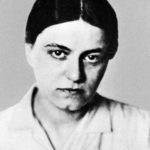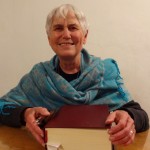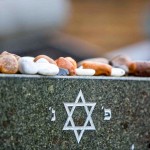
Sisters of Sion: The Nuns Who Opened Their Doors for Europe’s Jews
 |
| The Ecumenical Vatican II Council |
When I tell friends and family about the summer I spent living in Europe and Israel with an order of women religious, they are always surprised: Convents are not a typical summer get-away for young Jewish girls. But the Sisters of Sion have a distinctive vocation. They see it as their God-given role to love the Jewish people and build bridges between the Jews and the Church — without proselytizing.
October 2012 marks the 50th anniversary of the opening of the Second Vatican Council. In light of the religious violence sparked throughout the Middle East during the past month, the the Sisters of Sion’s work during this complicated time in the Church’s history holds particular poignance. Opened by Pope John XXIII in the fall of 1962 to help the Church reconcile some of the “great problem[s] confronting the world,” Vatican II aimed in part to rebrand Catholicism for the modern age, rethinking everything from the role of bishops to the language of worship services. But one of the more controversial questions looming that autumn was how the Church might begin to heal the wounds of Christian anti-Semitism, which seemed in dire need of attention after the Holocaust . Over three years, four Council sessions, and many political battles, a declaration was hammered out: Nostra Aetate, or “In our age.” The declaration recognized the kinship between Christians and Jews, repudiated any charges of deicide levied against contemporary Jews, and decried acts of anti-Semitism throughout history. Looking back now, these steps toward dialogue may seem so basic as to be obvious: How can two peoples co-exist when one still blames the other for killing its savior? Yet, at the time, this was an important step towards interfaith cooperation and tolerance.
The Sisters of Sion worked hard to achieve such an explicit repudiation of the concept of “deicide.” Of the more than 3,000 bishops, translators, scholars, and aides present at Vatican II, only 23 were women — and these Council “mothers” were only silent observers. But that did not stop the Sisters of Sion from working behind the scenes to influence the Council’s work on Catholic-Jewish relations.
During the Holocaust, the Sisters were heavily involved in rescue efforts, forging documents for Jewish children and hiding them in schools. After the war, mindful of the dangers of even more subtle anti-Semitism, the Order shifted the language of its mission, dimming the emphasis on “conversion of the children of Israel” and exploring the best way of being a “friend” to the Jews.
This was a complicated time for the Church. Pope Pius XII, who led the Vatican during World War II, never officially condemned the Nazis or their mass murder of the Jews, though there is strong evidence that he was aware of what was going on. Private correspondences show that the Pope was concerned both about potential backlash against Catholic soldiers and civilians and increased cruelty toward the Jews, but his vague public appeals for peace and official wartime neutrality did not sit well with the public, especially after the war had ended and the extent of the killing became more widely known.
Pius XII’s successor attempted to repair the damage. In 1960, a Jewish Holocaust survivor named Jules Isaac visited Pope John XXIII. Afterwards, the Pope met with biblical scholar Cardinal Augustin Bea to discuss the possibility of including a statement on the Jews in the work of Vatican II.
From the beginning, the Sisters of Sion were a part of this effort. In his first speech to the Congregation in January of 1964, Cardinal Bea spoke of Sion’s particular vocation, which gave the Sisters a “special right” to speak of the Church’s spiritual relationship with the Jews. He encouraged the Sisters to increase their work with the Jews as a way to “make up for the ingratitude, unkindness, and injustice of Christians to these people — faults which the Church has committed throughout the ages.”
The Sisters, corresponding with influential Church leaders, pushed for a more radical rethinking of the attitude towards Judaism.
In the later years of the Council Sister Magda met with Cardinal Giacomo Lercaro, a leading member of the Secretariat for Promoting Christian Unity who made a significant “intervention” in the Council on behalf of Nostra Aetate in 1964, after his team of theologians asked the Sisters to prepare a dossier of information on Catholic-Jewish relations.
After the Council, the Sisters’ work on interreligious dialogue blossomed through the creation of centers for research and dialogue in Rome and Paris. Sion’s first members in the mid-nineteenth century, women educators with a special interest in fostering Christian-Jewish friendship, were ahead of their time in the love and respect they afforded all of their students, regardless of their faith.
Never once did I feel uncomfortable as a Jewish woman living in Catholic convents–on the contrary, staying with the Sisters of Sion brought me closer to my faith. So many Sisters enthusiastically helped me sift through dusty documents, patiently listened to my Frenglish, and openly shared their life stories, offering an example of what it means to live taking the words from the Gospel of St. John to heart. They are the same words cited in the conclusion of Nostra Aetate:
source: www.theatlantic.com






